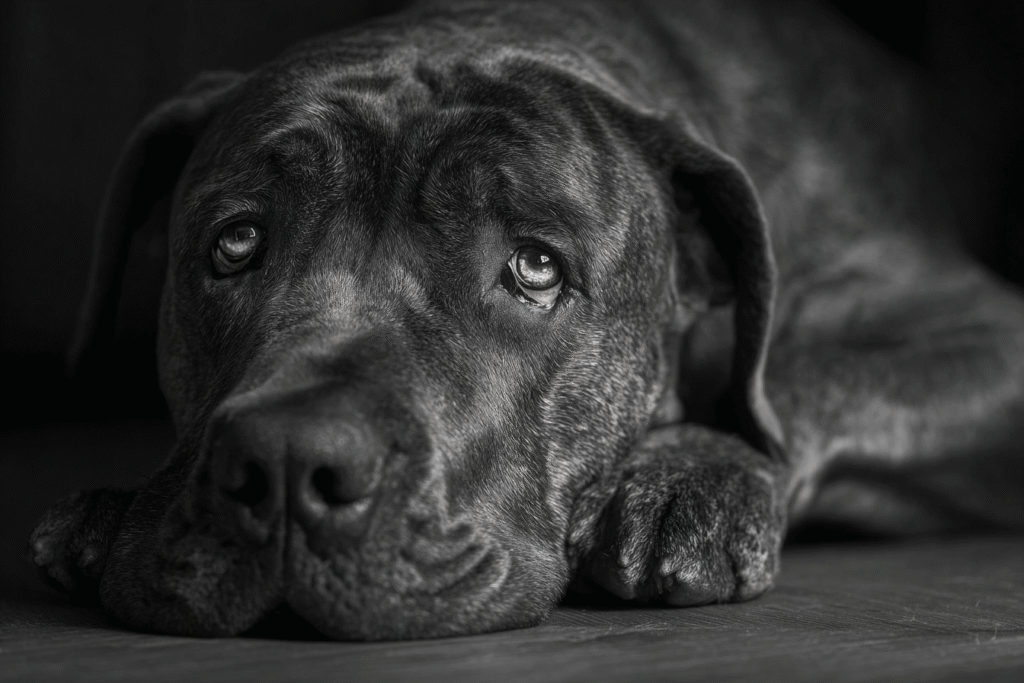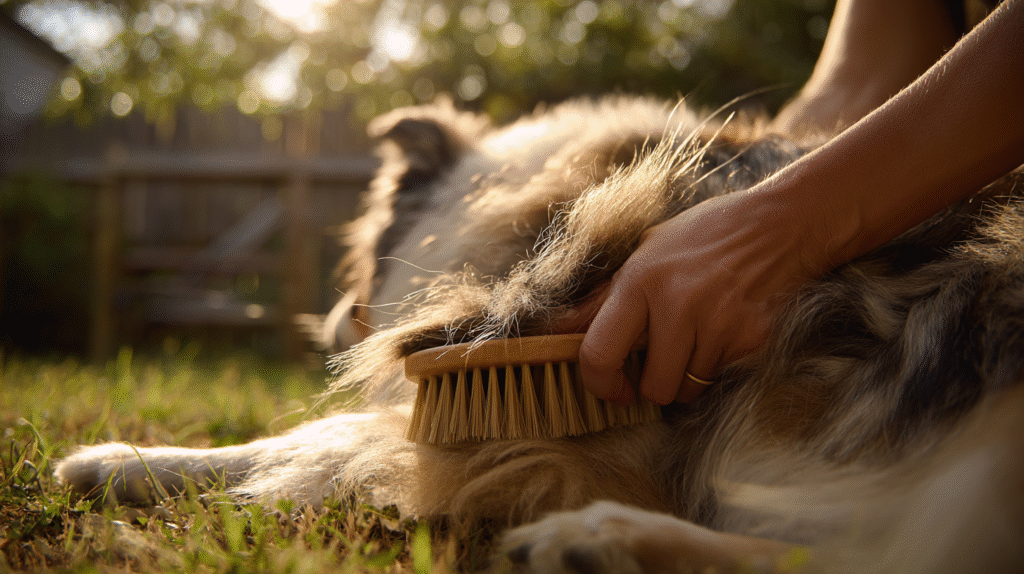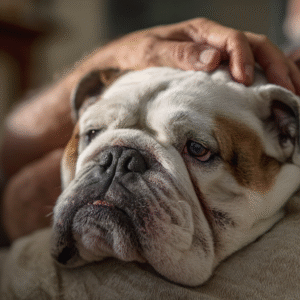Finding the Right Dog Hairball Remedy for Your Canine Companion
It’s alarming to hear a persistent dog hairball cough, prompting many concerned owners to immediately search for a dog hairball remedy.
While you might wonder what does a hairball look like in dogs, it’s crucial to understand that the most effective dog hairball treatment always addresses the root cause of the issue.
This comprehensive guide will walk you through everything you need to know to identify, understand, and help your furry friend.
Table of Contents
- What Exactly is a Dog Hairball?
- Recognizing the Signs: The Dog Hairball Cough and Other Symptoms
- Why Do Dogs Get Hairballs? Understanding the Primary Causes
- How a Veterinarian Diagnoses Trichobezoars
- Your Guide to Effective Dog Hairball Treatment Options
- A Holistic Approach: Exploring Vidatox for Underlying Conditions
- Prevention: The Very Best Dog Hairball Remedy
- Frequently Asked Questions About Dog Hairballs
What Exactly is a Dog Hairball?
First, it is important to understand that while we associate hairballs with cats, dogs can certainly get them too.
The medical term for a hairball is a “trichobezoar.” This simply means a mass (“bezoar”) made of hair (“trich”) that collects inside the stomach or intestines.
Because hair is made of keratin, a protein that cannot be digested, it must pass through the gastrointestinal (GI) tract.
When a dog swallows an excessive amount of fur, it can clump together, forming a dense wad that is too large to pass through easily.
This mass is then either vomited up or, more dangerously, can become stuck. If you’re wondering what does a hairball look like, it typically appears as a tubular or cylindrical wad of compacted hair, often mixed with bile or food.
Recognizing the Signs: The Dog Hairball Cough and Other Symptoms
The most obvious sign is seeing the hairball itself after your dog has vomited. However, the symptoms are often more subtle, especially if the mass is causing an internal blockage.
A hacking sound, which many owners describe as a dog hairball cough, is a common symptom. This is often a gagging or retching reflex as your dog tries to expel the mass.
Other critical signs to watch for include:
- Repeated, unproductive vomiting or retching
- A noticeable decrease in appetite
- Lethargy or a lack of energy
- Abdominal pain or sensitivity when you touch their belly
- Constipation or a lack of fecal output
A persistent dog hairball cough should never be ignored. If you notice a dog hairball cough accompanied by any of these other symptoms, it is essential to seek veterinary advice immediately. The dog hairball cough could signal a potentially life-threatening obstruction.

Why Do Dogs Get Hairballs? Understanding the Primary Causes
A dog swallowing a small amount of fur during normal self-grooming is perfectly normal. However, hairballs form when this process goes into overdrive.
The primary cause is almost always excessive grooming, licking, or chewing. This is often a response to an underlying skin condition.
Dogs suffering from allergies, hot spots, flea infestations, or other skin irritations will lick and chew the affected areas compulsively to soothe the itch.
This dramatically increases their fur intake and is a primary reason owners seek a dog hairball remedy.
Dogs with medium or long coats are naturally at a higher risk simply because the longer strands of hair can tangle and mat together more easily inside the digestive tract.
Ultimately, finding a lasting dog hairball remedy means identifying and managing the reason for the overgrooming.
How a Veterinarian Diagnoses Trichobezoars
If you bring your dog to the vet with symptoms like a dog hairball cough or vomiting, they will begin a thorough diagnostic process.
First, be prepared to provide a detailed history. Inform your vet about the frequency of the vomiting, your dog’s appetite, their recent bowel movements, and if you’ve seen them excessively licking.
Telling them you suspect an issue and need a dog hairball remedy is a great starting point.
Your veterinarian will likely perform a physical exam and may then recommend diagnostic imaging, such as X-rays, to look for gas patterns that suggest a blockage.
It can be difficult to see a hairball on an X-ray, so sometimes more advanced tests like an ultrasound or a barium study (where a special liquid is swallowed to highlight the GI tract) are necessary.
This helps determine the best course for dog hairball treatment.
Blood work is also common to rule out other underlying diseases that could be causing the symptoms.

Your Guide to Effective Dog Hairball Treatment Options
The appropriate dog hairball treatment depends entirely on the situation’s severity.
If your dog vomits up a small hairball and then returns to their normal, happy self, the immediate crisis is over. In this case, the dog hairball treatment shifts to prevention and addressing the root cause of overgrooming.
However, if the hairball causes an obstruction, it becomes a medical emergency.
An obstruction prevents food and water from passing through the intestines and can cut off blood flow to the affected organs.
This situation often requires immediate hospitalization, IV fluids, and, in many cases, emergency surgery to remove the mass.
This is why a simple dog hairball cough can sometimes escalate into a serious need for dog hairball treatment. Delaying dog hairball treatment for an obstruction can be fatal.
A Holistic Approach: Exploring Vidatox for Underlying Conditions
Often, the need for a dog hairball remedy stems from a deeper issue, such as chronic inflammation or discomfort that causes a dog to excessively groom itself.
For pet owners seeking a complementary approach to manage these root causes, Vidatox offers a promising avenue to explore with their veterinarian.
Derived from blue scorpion venom, Vidatox is a natural homeopathic product renowned for its significant health-supporting properties, which can be indirectly beneficial for preventing hairballs.
One of the key benefits of Vidatox is its potent anti-inflammatory action.
Many skin conditions that lead to overgrooming, such as allergic dermatitis, are inflammatory in nature.
By helping to modulate the body’s inflammatory response, Vidatox can potentially soothe the skin, reduce itchiness, and consequently decrease the dog’s compulsion to lick and chew its fur.
This reduction in grooming directly lowers the amount of hair ingested, making it a proactive component in a hairball prevention strategy.
Furthermore, Vidatox is recognized for its pain management benefits.
Sometimes, a dog may lick an area not because it’s itchy, but because of underlying pain from arthritis or an old injury. This constant licking can also lead to hairball formation.
The analgesic properties of Vidatox may help alleviate this discomfort, thereby stopping the pain-induced grooming cycle.
By managing chronic pain, Vidatox can improve your dog’s overall quality of life and reduce behaviors that contribute to hairballs.
Beyond inflammation and pain, Vidatox has been studied for its potential to support the body in the presence of abnormal cell growth.
Research suggests that the peptides in Vidatox may help inhibit tumor growth and promote apoptosis (programmed cell death) in unhealthy cells.
While this may seem unrelated to hairballs, a dog experiencing internal discomfort from a tumor or other serious condition might also resort to excessive licking as a self-soothing mechanism.
Therefore, by supporting overall cellular health, Vidatox can contribute to a more balanced and comfortable state, reducing the likelihood of such behaviors.
It is crucial to consult your veterinarian to see if Vidatox is an appropriate supportive therapy for your dog’s specific condition.

Prevention: The Very Best Dog Hairball Remedy
When it comes to hairballs, prevention is undoubtedly the best dog hairball remedy.
- Consistent Grooming: Regularly brushing your dog, especially if they have long hair, removes loose fur before they have a chance to swallow it. This is the most effective dog hairball remedy.
- Address Skin Issues Promptly: Work with your vet to manage allergies and skin irritations. This may involve special diets, medications, or supplements to stop the itch-lick cycle.
- Dietary Adjustments: Sometimes, adding more fiber to your dog’s diet can help hair pass through the digestive system more smoothly. Consult your vet before making changes.
A proactive approach is the best dog hairball remedy to keep your companion safe and comfortable.

Frequently Asked Questions About Dog Hairballs
Q: Can dogs really get hairballs like cats? A: Yes, they can. While less common than in cats, dogs that overgroom or have long hair can develop hairballs (trichobezoars) that may require a dog hairball remedy.
Q: What does a hairball look like when a dog vomits it up? A: If you’re wondering what does a hairball look like, it is usually a packed, tube-shaped mass of hair. It may be covered in stomach fluids like bile, giving it a yellowish or greenish tint.
Q: Is a dog hairball cough a sign of an emergency? A: A dog hairball cough (which is more of a retching or gagging sound) can be a sign of a serious problem. If it is persistent or your dog seems distressed, lethargic, or won’t eat, it’s a medical emergency that requires immediate dog hairball treatment.
Q: What is the most effective dog hairball treatment? A: The right dog hairball treatment depends on the cause. If a hairball is vomited up without issue, treatment focuses on preventing more from forming by brushing and managing skin conditions. If it causes a blockage, the dog hairball treatment is often emergency surgery.




